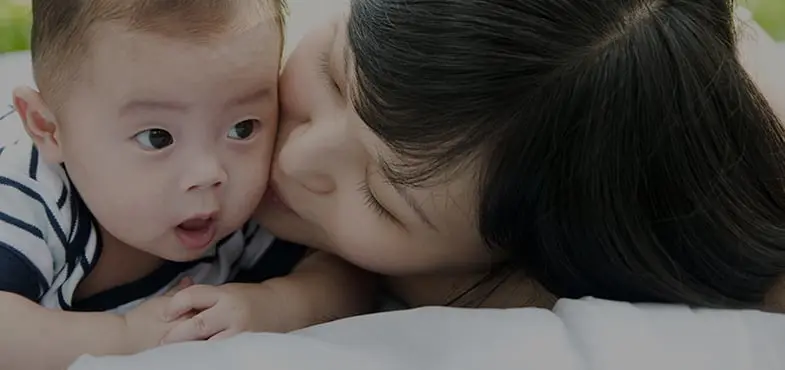The outdoors is filled with sights, sounds and tons of things to touch and explore. Spending time outside with your baby can both help his development and instill a lifelong appreciation for nature.
You and your baby can head outside right away. Many paediatricians recommend keeping newborns away from crowded places, where germs are prevalent. But as long as you take the proper precautions, a walk outside is great for everybody — especially for tired parents!
When is it too hot, too cold or too wet to take a baby outside?
Here are some of the best ways to prepare for summer heat, wet or cold weather, wind and snow with your baby.
Summer heat: Go out in the morning or early evening to avoid the highest daily temperatures. Have baby wear a hat and light-colored cotton clothes. Avoid direct sun and seek shade. Bring a spray bottle of water for a quick cool-down. Of course, splashing in a pool, lake or stream with your baby is refreshing too!
Wet or cold weather: Dress your baby in several thin layers, a warm hat, mittens and insulating shoes or socks. To make sure baby’s not getting overheated, stick your hand on their skin under their clothes and shed a layer if needed. The rule of thumb for older babies and young children is to dress them in one more layer of clothing than an adult would wear in the same conditions.
Wind: If your baby seems uncomfortable, and you can’t shield them from the wind, take them inside.
Snow: If you’re lucky enough to catch it, snow is magical, especially to a baby. Get a baby snow suit so your little one doesn’t miss out on the fun. Hint: Look for them at second-hand shops — chances are they’ve only been used a few times.
How do I protect my baby from the sun?
The sun is our friend: it makes plants grow, keeps us warm and helps us see the world around us. But it is true that a baby’s skin is especially sensitive to the sun’s rays.
Here are some tips to help protect your baby from the sun:
Avoid the sun during the hottest part of the day between 10 am and 2 pm. Stay in the shade, and remember that reflected light can also be harmful. Water, sand and snow are three big reflectors, so just be aware of your surroundings!
Dress infants in lightweight long pants, long-sleeved shirts and brimmed hats that shade the neck to prevent sunburn.
Even on cloudy days or while riding in the car, always use a sunscreen specially developed for babies. If your baby is younger than 6 months of age, discuss the use of sunscreens with your nurse, doctor or pharmacist.
But nature’s so…dirty!
Don’t be afraid if your baby gets dirty while outside. A growing number of researchers believe that good old-fashioned playing in the dirt exposes children to a myriad of bacteria, viruses and microbes that strengthen their immune systems. Mud pies, anyone?
How do I know which plants are dangerous?
Making grass whistles, eating blackberries, blowing a dandelion into the wind: most plants and flowers are delightful parts of an outdoor childhood.
Be sure to consult your paediatrician if you feel your baby is exhibiting an allergic rash.
Babies explore their world by putting just about anything into their mouth. But some plants are actually poisonous to eat.
How do I keep insects away?
Not all insects are as lovely as ladybugs and butterflies, but don’t let them keep you and your baby inside.
Mosquitoes: The best way to protect against mosquitos is to prevent them. Mosquitos breed in stagnant water, so remove any pots or fill in any holes outside where water may collect.
Stinging insects: Bees, wasps and other stinging insects don’t attack unless provoked, but babies might annoy one by accident. If your baby does get stung, it will most likely cause some swelling and pain that will be relieved in a few hours. It is important to remove the stinger — use a credit card or fingernail and gently scrape it off horizontally. Then soak a cloth in cold water and press it over the area to reduce the pain and swelling.
Allergic reaction: In rare instances, your baby may be allergic to bee stings, which is very dangerous. Symptoms of this allergy include: Rash over many parts of his body, shortness of breath, swollen tongue, hands, or face, weakness and unconsciousness. Call 000 immediately.
Bug repellent: Insect repellents labelled "for the whole family" can usually be used once a child is over 2 months old. Talk with your paediatrician before using insect repellent on your baby.
Can babies get seasonal allergies, like hay fever?
This is one thing you most likely don’t have to worry about — yet. It’s rare that babies experience seasonal allergies for the simple reason they haven’t been alive long enough. But when a child is about 3 years old, seasonal allergies can spring up, and your paediatrician can offer guidance on how to treat them.

Safe at Play
Playgrounds are a perfect place for your toddler to make new friends while enjoying the outdoors. BabyCenter helps you know what hidden hazards to watch out for.
Mums around the world look to JOHNSON’S® to care for their babies
We are committed to working with mums, healthcare experts and scientists to ensure our products continue achieving the highest JOHNSON’S® baby standards.
Our commitment to healthy babies goes beyond our products
We take great pride in our initiatives that help babies grow up in a healthy community and a healthier world.
